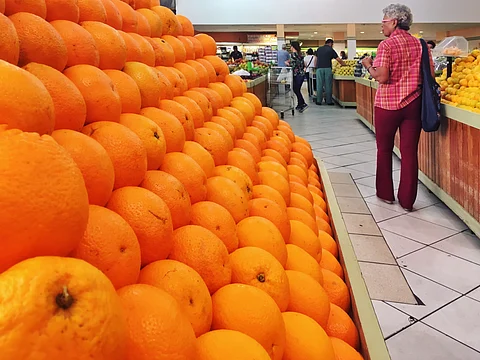

U.S. President Donald Trump’s proposed 50% tariff on Brazilian goods, set to begin August 1, is poised to disrupt Brazil’s vital citrus industry.
The United States, a key market absorbing 42% of Brazil’s orange juice exports, valued at $1.31 billion last season, is critical to the sector.
With U.S. orange juice production at a 50-year low of 108.3 million gallons for the 2024/25 harvest, imports account for 90% of U.S. supply, making Brazil’s role indispensable.
The tariff, a sharp increase from the current $415 per ton duty, threatens to halt exports, leaving farmers and exporters in Brazil’s citrus belt grappling with plummeting prices and uncertain futures.
The tariff’s ripple effects are already evident in Brazil, where orange prices have fallen to 44 reais ($8) per box, nearly half of last year’s value, according to the Cepea index from the University of Sao Paulo.
Farmers like Fabricio Vidal from Formoso, Minas Gerais, face the grim prospect of leaving fruit to rot, as harvesting costs may outweigh potential revenue.
In the U.S., consumers reliant on Brazilian orange juice — comprising half of brands like Tropicana and Minute Maid — could face higher prices.
Companies such as Coca-Cola and Pepsi, which dominate 60% of the U.S. orange juice market, may also suffer, though neither has commented publicly.
Brazil, responsible for 80% of global orange juice production, faces challenges in redirecting exports.
The European Union already purchases 52% of Brazil’s orange juice, leaving little room for expansion.
High duties in markets like India and South Korea, combined with low demand in China, restrict alternatives.
Some exporters route juice through Costa Rica to bypass current duties, but scaling this practice under the new tariff remains uncertain.
As prices in Brazil’s citrus belt drop to a third of last year’s levels, farmers like Ederson Kogler emphasize the difficulty of finding new markets quickly, signaling a looming crisis for the industry.